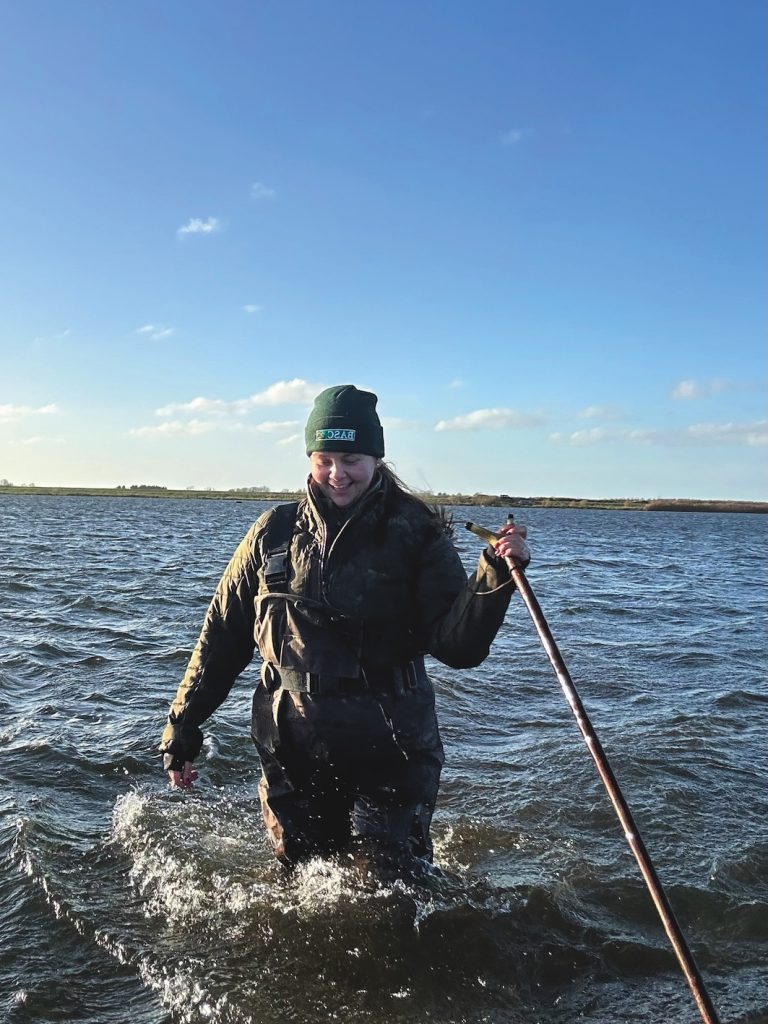Win CENS ProFlex DX5 earplugs worth £1,149 – enter here
Spotlight on continental HPR breeds
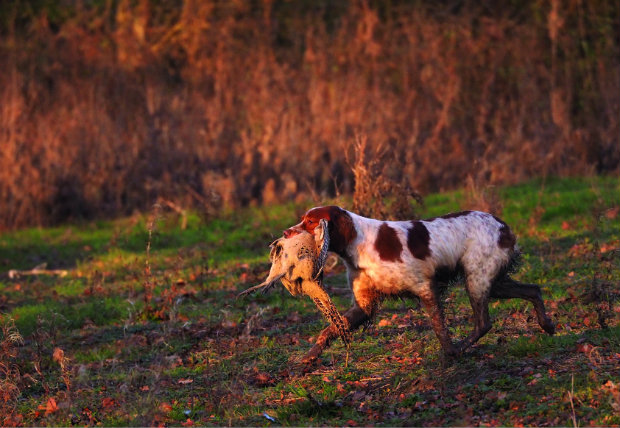
One of the founding fathers of modern electric blues music was a man known as Muddy Waters. A fellow black musician, bemoaning what he perceived to be the hijacking of their music — mainly by the American middle class — once voiced his concern. Muddy, far simply agreeing, responded: “Black, white; if it’s good, it’s good!”
So what does this have to do with dogs? Irrespective of breed, if a dog is good, then it’s good. You will soon realise how many mediocre dogs there are when you see a truly good one. One of the worst things any gundog enthusiast can do is to lose objectivity and develop breed bias or kennel blindness, which can also include a breed’s country of origin. A gundog breed need not have originated in this country for it to be of any use within the British sporting scene.
A steady pointing dog
As an average Shot, I prefer a pointing breed. I stand a better chance of adding game to the bag with a steady pointing dog that allows me to get close to the quarry, which gives me more chance of a successful shot. One of the wonderful things about the hunt, point and retrieve (HPR) breeds is that there’s no “one size fits all”. Even within their native countries, the varying regions have developed their own individual breeds, which have adapted to us that particular region’s terrain, quarry and hunting requirements.
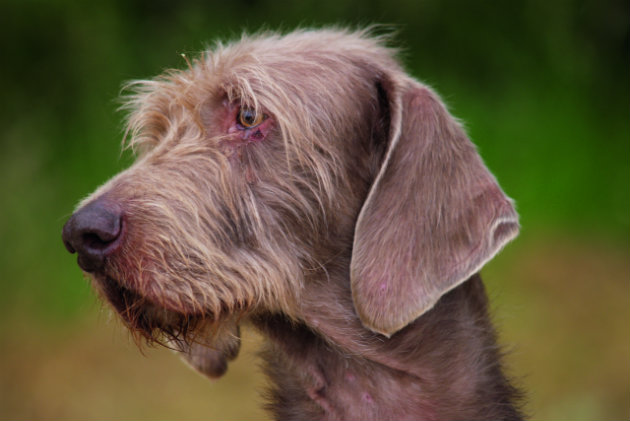
A Slovakian rough-haired pointer
You simply have to look to Germany, the country that was the trailblazer for the eventual introduction of HPR breeds here in the UK, which has an incredible number. The 21 miles of water between us and the Continent, and a long legacy of divergent sporting practices, mean that we have our own native breeds. But I have seen a mini French invasion, with a number of chiens d’arrêt (retrievers) of varying breeds arriving and being worked upon our shores. To the best of my knowledge, the following are now present in various numbers: braque Français, French spaniel (l’épagneul Français), l’épagneul bleu de Picardie and de Pont-Audemer.
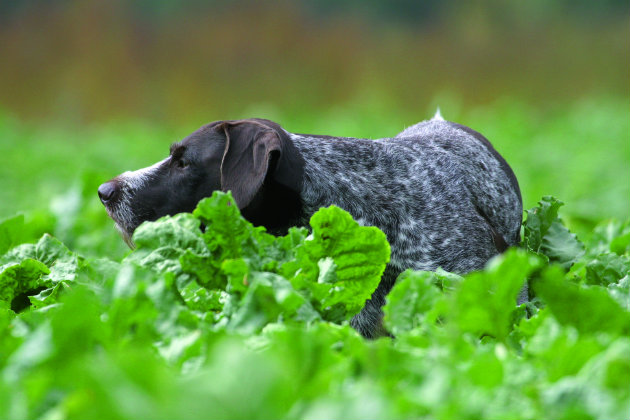
A German wirehaired pointer
Over the past few years, thanks to the hospitality and generosity of various moor owners and keepers, I have been the facilitator of what we call “grouse experience days”. I say facilitator, because I am not a trainer; a facilitator simply makes things happen. The idea of these days is to give handlers and their dogs the chance of a day on the moor, in a controlled, non-competitive environment.
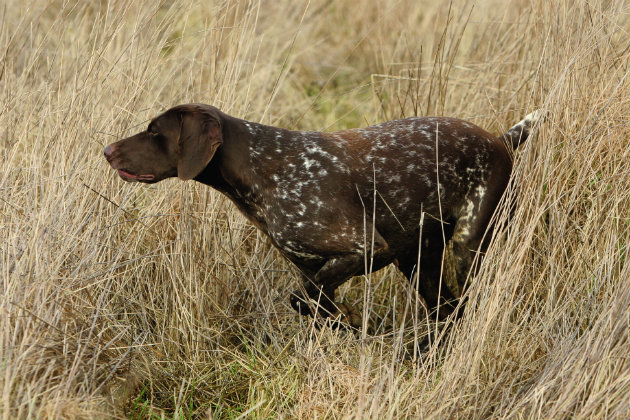
A German shorthaired pointer
It is to encourage handlers, with their personal choice of HPR breeds, to allow the dog’s inherent natural ability to come to the fore. Some dogs had never previously set foot on a moor, and appear to be somewhat confused as to their reason for being present on the day. They have gone on, in subsequent runs, to find and point grouse.
Different HPR breeds
To begin with, these experience days were organised solely for people with my own breed, the Hungarian wirehaired vizsla. However, knowing of the growing desire for such opportunities from other breed owners, I extended the invitation to all HPR owners. One day last July, on a moor in North Yorkshire, I had something of a “Eurovision”, with seven different HPR breeds represented. They included German wirehaired/shorthaired pointers, a Slovakian rough-haired pointer, a Munsterlander, a vizsla, a French spaniel and a Brittany. All breeds had their own individual style and methods of getting on with the same job.
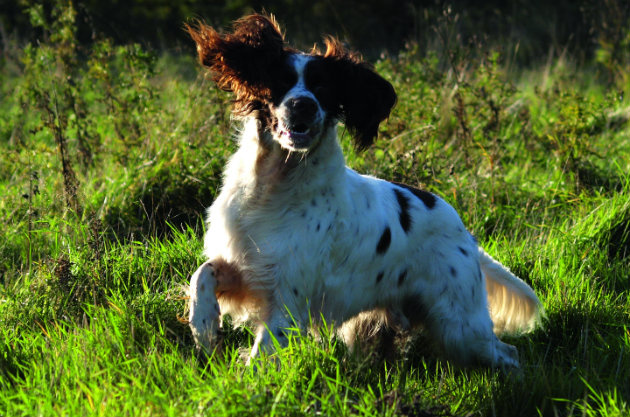
The French spaniel – l’epagneul Francais – is one of the Continental breeds present in the UK in good numbers
Pont-Audemer
The first of the French breeds I was to encounter was a Pont-Audemer, owned by Sue Axtell. At the time, it was one of only two such animals in the UK. Before I met Sue and her dog, I consulted a book on French breeds to discover some background. The picture showed a rather poodle-like, brown-and-white dog. It had that slight curl to its coat, which suggests it is a type of water dog, but its size and structure were impossible to ascertain from the photograph.
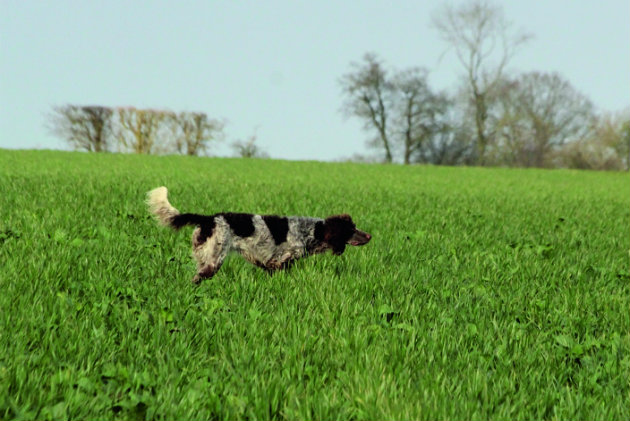
The Pont-Audemer is known affectionately in Normandy as “the clown of the marsh”
In the flesh, it was lighter framed and a little leggier than I had imagined. However, despite its limited experience on the moor, it got on with the job with pace and good natural wind usage, and covered adequate amounts of ground. You would not imagine this last trait is a prerequisite for a breed used for work in Normandy in the areas of marshland close to the town of Pont-Audemer. In its home region, the “Ponto” is affectionately known as the “clown of the marsh”.
In the early 1800s, the breed was a popular marsh hunter and wildfowlers’ dog, but there have been fluctuations in its popularity — it was almost wiped out following World War II. According to Sue, the breed is well suited for walked-up shooting; its pointing is good, if the young dog has early exposure to game; and its retrieving is reliable from both land and water. On the downside, she says, it can be slow to mature and there is a need for gentle handling, so it must be trained with this in mind.
Raising your voice to a Ponto is likely to cause it to wilt; new experiences are usually greeted with five minutes of suspicion before it wags its tail and you can get on with the job. Evidently, they can be crafty and will play on that.
Sue admitted that the breed might never take off here. Perhaps it will always remain a rare but worthwhile addition. However, should you ever encounter an épagneul de Pont-Audemer on a day’s shooting, be like Muddy Waters and simply acknowledge that it’s good.
The class divide
If the lower echelons of Victorian Britain had had a more rural existence, and a need to obtain their sustenance from the land, their chosen breed of dog would have more closely resembled those in Europe: an all-rounder rather than a specialist.
If I lived then, as I do now, in the North of England, I would be hunting over primarily heather and white-grass moorland. According to my social status, I might only be able to afford one dog, so it would have to be able to work wide enough to locate well-spread game but at a distance that allowed me to reach it in adequate time to obtain a shot. I would not need a close hunting dog or, for that matter, would I need a super-charged dog that covered half the county in one beat, after which — if I had actually shot what the dog had pointed — it would have to be retrieved.
My counterparts hunting the more enclosed country in the south would not require the same breed of dog. Therefore, I believe our native breeds are the result of our class system.
Related Articles
Get the latest news delivered direct to your door
Subscribe to Shooting Times & Country
Discover the ultimate companion for field sports enthusiasts with Shooting Times & Country Magazine, the UK’s leading weekly publication that has been at the forefront of shooting culture since 1882. Subscribers gain access to expert tips, comprehensive gear reviews, seasonal advice and a vibrant community of like-minded shooters.
Save on shop price when you subscribe with weekly issues featuring in-depth articles on gundog training, exclusive member offers and access to the digital back issue library. A Shooting Times & Country subscription is more than a magazine, don’t just read about the countryside; immerse yourself in its most authoritative and engaging publication.






